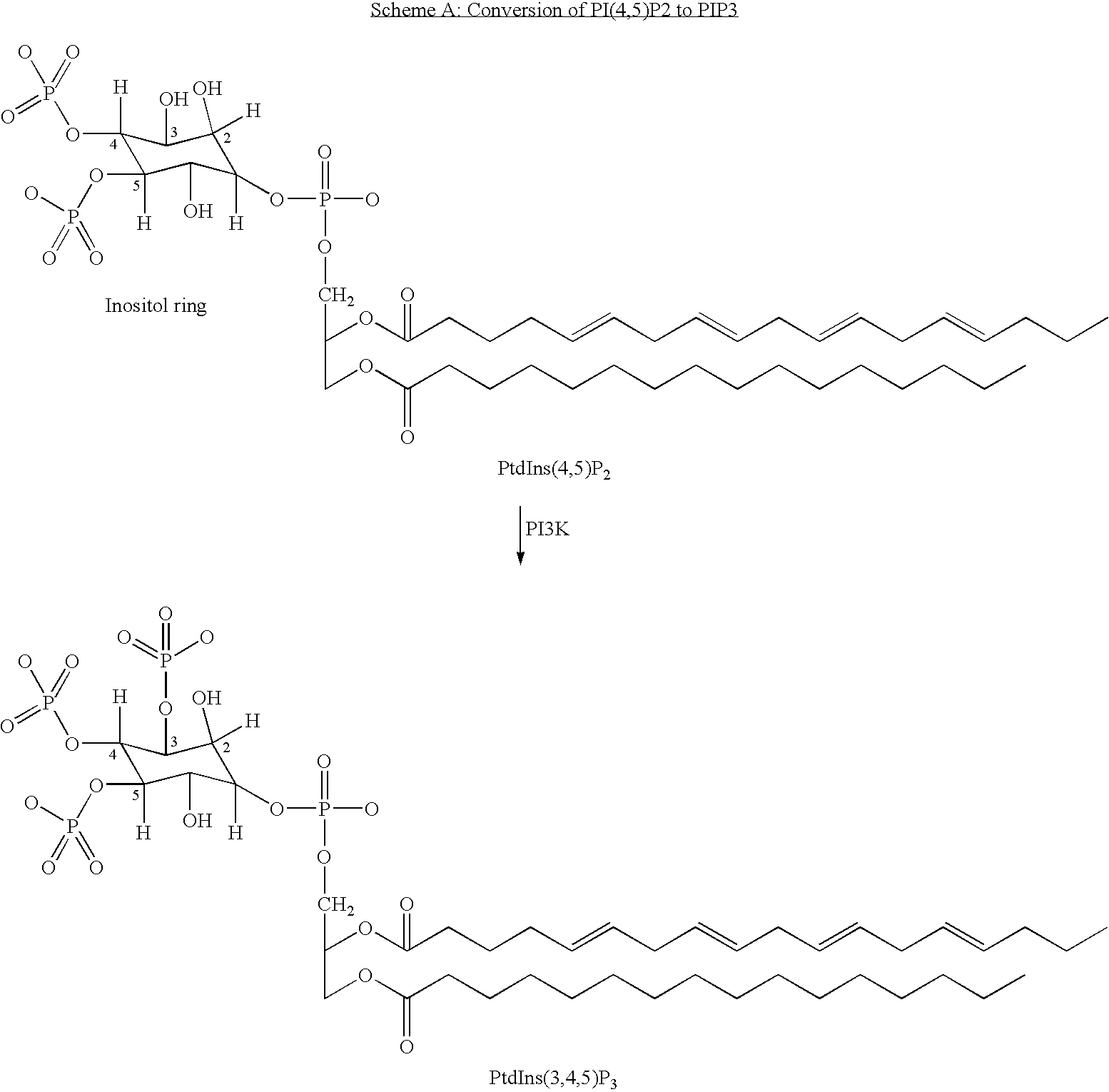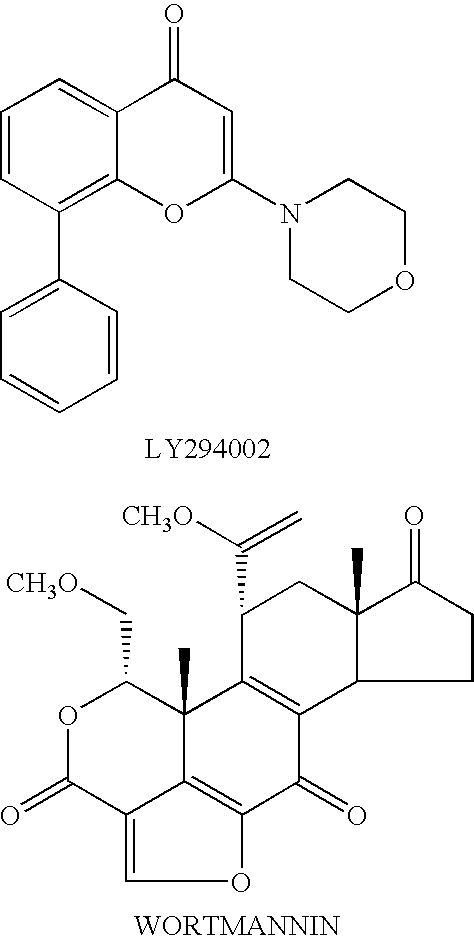Quinoxaline derivatives as PI3 kinase inhibitors
a technology of pi3 kinase inhibitor and quinoxaline derivative, which is applied in the field of quinoxaline derivatives, can solve the problem of limited expression of the enzyme, and achieve the effect of reducing the risk of bacterial infection
- Summary
- Abstract
- Description
- Claims
- Application Information
AI Technical Summary
Benefits of technology
Problems solved by technology
Method used
Image
Examples
example 1
Preparation of 2-(4-morpholinyl)-7-(1H-pyrazolo[3,4-b]pyridin-5-yl)quinoxaline
a) 7-bromo-2(1H)-quinoxalinone
Prepared according to the procedure described in Journal of Medicinal Chemistry, 1981, 24(1), 93-101.
b) 7-Bromo-2-chloroquinoxaline
A slurry of 7-bromo-2(1H)-quinoxalinone (22.2 mmol) in neat phosphorus oxychloride (50 ml) was heated at 120° C. for 20 hours. The reaction was cooled to ambient temperature then concentrated under reduced pressure to a purple residue. The residue was taken into ethyl acetate then slowly poured into ice-cold, saturated aqueous sodium bicarbonate solution (˜100 ml) and extracted with ethyl acetate. The extracts were washed with saturated aqueous sodium bicarbonate and brine then dried over anhydrous sodium sulfate and decolorizing charcoal. The slurry was filtered through Celite then concentrated under reduced pressure to give the title compound (3.0 g, 55%) as a white solid. MS(ES)+ m / e 242.9; 244.8 [M+]+.
c) 7-Bromo-2-(4-morpholinyl)quinoxaline
A so...
example 69
Preparation of 2-amino-N,N-dimethyl-5-[3-(4-pyridinyl)-6-quinoxalinyl]-3-pyridinesulfonamide
a) 7-bromo-2-(4-pyridinyl)quinoxaline
A mixture of 7-bromo-2-chloroquinoxaline (2.05 mmol), pyridine-4-boronic acid (2.05 mmol), [1,1′-bis(diphenylphosphino)-ferrocene]dichloropalladium(II) dichloromethane complex (1:1) (0.1025 mmol), 2M aqueous potassium carbonate (5 mL) and anhydrous 1,4-dioxane (15 mL) was heated at 100° C. for 16.5 h in a sealed pressure vessel. After cooling to room temperature, the organic layer was separated and purified directly on silica gel, eluting with 50-100% ethyl acetate in hexanes to provide the title compound as a yellow solid (382 mg, 65% yield). MS(ES)+ m / e 285.9; 287.8 [M+]+.
b) 2-amino-N,N-dimethyl-5-[3-(4-pyridinyl)-6-quinoxalinyl]-3-pyridinesulfonamide
A mixture of 7-bromo-2-(4-pyridinyl)quinoxaline (0.245 mmol), 2-amino-N,N-dimethyl-5-(4,4,5,5-tetramethyl-1,3,2-dioxaborolan-2-yl)-3-pyridinesulfonamide (0.245 mmol), [1,1′-bis(diphenylphosphino)-ferrocene]d...
example 80
Preparation of 5-[3-(1-piperazinyl)-6-quinoxalinyl]-3-pyridinesulfonamide
A solution of 1,1-dimethylethyl 4-{7-[5-(aminosulfonyl)-3-pyridinyl]-2-quinoxalinyl}-1-piperazinecarboxylate (0.21 mmol) (prepared according to Scheme 1) in acetonitrile (4 mL) was treated with concentrated trifluoroacetic acid (4 mL) for 2 hours. The reaction mixture was then concentrate and neutralized with saturated sodium bicarbonate (20 mL) and extracted with ethyl acetate (3×20 mL). The combined organic layers were washed with brine, dried over sodium sulfate, filtered and concentrated to yield the title product. MS(ES)+ m / e 371.0 [M+H]+.
Similar compounds were or can be prepared following the procedures used to prepare Example 80, with or without N,N′-dimethylformamide as solvent.
PUM
| Property | Measurement | Unit |
|---|---|---|
| polarity | aaaaa | aaaaa |
| concentration | aaaaa | aaaaa |
Abstract
Description
Claims
Application Information
 Login to View More
Login to View More - R&D
- Intellectual Property
- Life Sciences
- Materials
- Tech Scout
- Unparalleled Data Quality
- Higher Quality Content
- 60% Fewer Hallucinations
Browse by: Latest US Patents, China's latest patents, Technical Efficacy Thesaurus, Application Domain, Technology Topic, Popular Technical Reports.
© 2025 PatSnap. All rights reserved.Legal|Privacy policy|Modern Slavery Act Transparency Statement|Sitemap|About US| Contact US: help@patsnap.com



